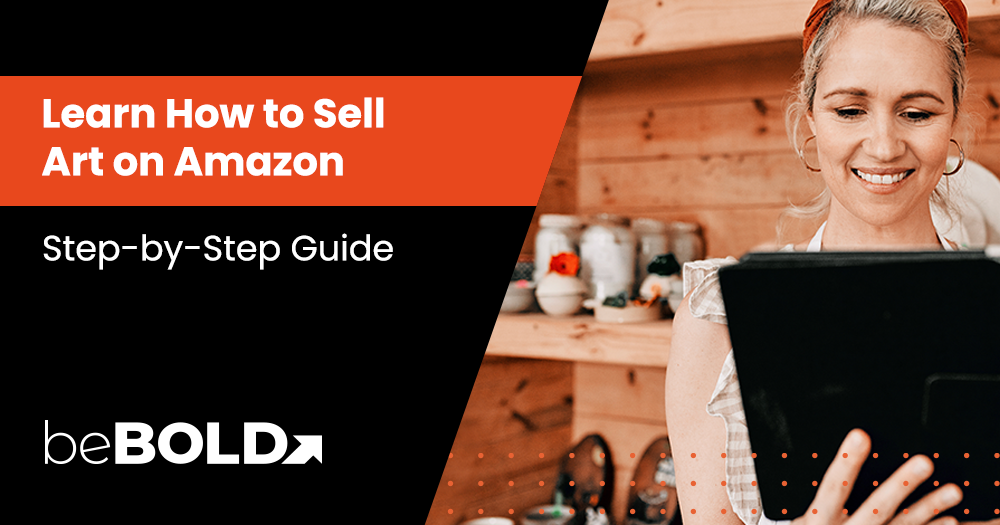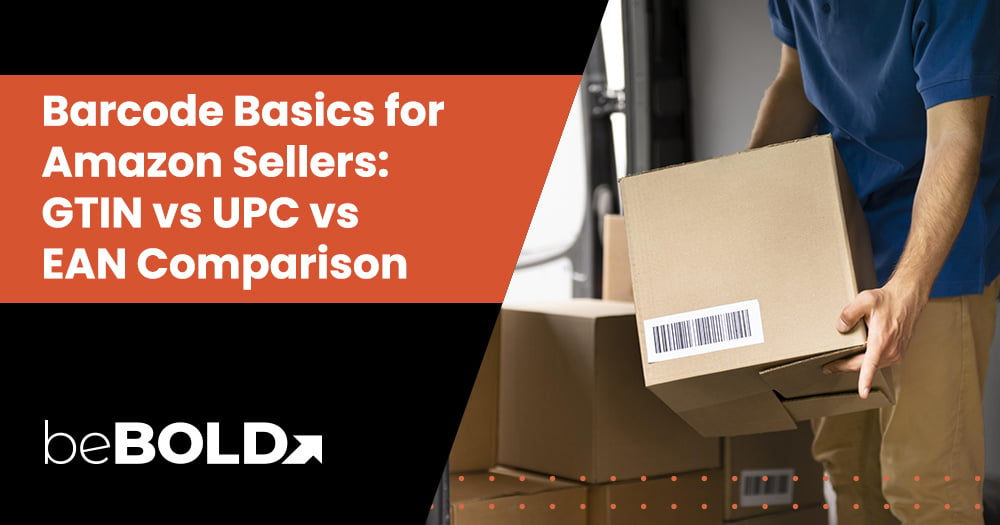Online art sales globally have reached nearly $12 billion in recent years, proving that the Internet has opened up a vast market for artists to promote their own art. Whether you are an established artist aiming to broaden your customer base or a budding one looking to kick-start your career, Amazon provides an extensive platform with millions of active shoppers.
This means that artists no longer need to wait for gallery exhibitions or art fairs to showcase their work. From original artwork and prints to digital products and merchandise imprinted with your artwork, Amazon offers an array of formats in which your creativity can be monetized.
Here, we provide an informative guide on sailing smoothly through selling artwork on Amazon, from setting up your seller account to handling customer feedback. So, let's dive in and discover how you can transform your artistic passion into commercial success!
How to Start Selling Art on Amazon: A Step by step guide
Selling art on Amazon may appear daunting, but with the right strategy and tools, you can easily navigate through this vast marketplace. Below, we will discuss the steps for you to get started!
1. Create a Professional Amazon Seller Account
The first step to start selling art on Amazon is to set up a Professional Amazon Seller Account. Visit the Amazon Seller Central website and click 'Register Now.' Select 'Create a new Amazon account,' then provide your email and password.
After receiving a One-Time Password (OTP) for verification, fill in your legal name or business name, along with your business address, phone number, and bank account information for payments.
Finally, choose a unique seller name that will appear on your listings. Once you've completed the registration, you'll be ready to list your artwork on one of the world's largest online marketplaces.
2. Understand Amazon Selling Fees and Plans
Amazon operates on two distinct selling plans.
- The Individual plan
The Individual plan, suitable for sellers predicted to sell fewer than 40 items per month, doesn't require any subscription fee but charges a sale fee of $0.99 per item sold.
- The Professional selling plan
On the other hand, the Professional plan is recommended for high-volume sellers and carries a monthly subscription fee of $39.99 but entirely waives the per-item fee. The subsequent crucial fee to consider is Amazon's referral fees, levied on each item sold, typically ranging from 8% to 15% based on the category.
In addition to these charges, be sure to factor in other costs such as shipping fees, storage fees for Fulfillment by Amazon services, and return processing fees. For a more detailed fee analysis for each product category, refer to the following text table:
|
Product Category |
Amazon's Referral Fee (%) |
|
Artwork |
20% |
|
Digital Art Prints |
15% |
|
Art Merchandise |
8-15% |
3. Research your niche and competition
Understanding your target audience and competition is crucial for a successful art-selling business on Amazon. Identify themes and styles that resonate with you, as your unique style will connect you with potential customers.
Analyze successful artists on the platform to determine what appeals to their global audience. Look for gaps in the market that you can fill or unique perspectives you can offer.
Stay updated on trending styles and themes to align your offerings with customer preferences, enhancing visibility and engagement. Remember, originality and consistent quality are vital for long-term success, so stay true to your artistic vision while surprising customers with fresh pieces.
4. Choose your art products and formats
Having decided upon your selling niche, the next step is to choose the type of art products and formats you want to list in your Amazon store. The more diverse your offerings, the more comprehensive your customer base will become.
Here are a few options:
- Original art: Handmade paintings or unique art pieces have a special appeal to customers because of their exclusivity and uniqueness.
- Curated artwork: Curating art from different artists or sourced artworks also offers a promising opportunity for showcasing a variety of styles and themes.
- Prints & reproductions: Offering prints of selected works or reproduced pieces is another practical option. You can recreate these prints yourself or work with a print-on-demand partner. This gives the advantage of eliminating the hassle of managing inventory or the risk of overproducing prints that don't sell.
- Art on products: Interesting products like mugs, t-shirts, or tumblers with your artwork printed on them offer a unique and functional way to display your art beyond the canvas. However, finding a reliable printing partner is essential to ensure consistency and quality across the different products.
5. Set up your Amazon product listings
Once you've selected the type of artwork and products to offer, the next step is setting up your Amazon listings. Ensure your product titles and descriptions are clear, detailed, and optimized with relevant keywords to boost search visibility.
Upload high-quality images that showcase your artwork from various angles. Clear, professional visuals are essential for grabbing customer attention, and you can use tools to create mock-ups if necessary.
In your product descriptions, highlight critical details like size, materials, and colors, along with the inspiration behind the art. Correctly categorize your products for easy customer navigation and set competitive pricing based on market analysis.
6. Optimize your store for Amazon SEO
Mastering Amazon's SEO is key to enhancing your product's visibility. Amazon's A9 algorithm ranks products based on two main factors: Relevance and Performance. While the former measures how well your product listing matches a user's search query, the latter evaluates your product's sales history and customer reviews to gauge success.
Optimize your listings for Amazon's A9 algorithm using these simple tips:
- Research & Use High-Relevancy Keywords: Identify and incorporate relevant Amazon keywords in your product titles, descriptions, and seller accounts.
- Write Detailed & Engaging Descriptions: Accurately describe your artwork, including details about size, medium, and inspiration behind the creation. The more informative, the better.
- Encourage Reviews: Positive customer reviews are vital for bolstering your Amazon SEO, as they indicate high-quality products and reliable customer service.
- Price Competitively: Lower prices can attract more customers and potentially improve your product's sales history. Experiment to find a price that maximizes your profit while remaining attractive to customers.
- Invest in Amazon Ads: Consider using Amazon's advertising tools, like Sponsored Products or Sponsored Brands, which can significantly increase your product visibility and attract more interested shoppers.
7. Implement customer-friendly shipping and return policies
If you're self-fulfilling orders, establishing customer-friendly shipping and return policies is important. Be transparent about shipping rates, as hidden charges are a leading cause of abandoned carts. If your budget permits, consider offering free shipping, which customers often perceive as a significant value-add, even if it requires a slight price adjustment.
Clear and lenient return policies are also essential, as they convey confidence in your product quality and enhance customer trust. Review Amazon's return policies before finalizing your own to ensure compliance.
If you opt for Amazon's Fulfilled by Amazon (FBA) service, you won't have to worry about shipping logistics. Instead, just focus on providing comprehensive product information and clear images to minimize customer returns.
8. Collect and use customer feedback to improve
Collecting and processing customer feedback is vital for improving your Amazon art store. You must regularly check customer reviews to see how you're doing with product quality and service. This, in turn, will provide you with insights to make your Amazon art store better.
Accept negative feedback as a valuable opportunity to identify areas for improvement. Use these insights to enhance the customer experience and address any issues.
Moreover, reach out to customers after they've received their artwork with personalized emails to gather their opinions. Always respond respectfully to negative reviews, showing that you value their feedback and are committed to making things right. This approach strengthens customer relationships and boosts your store's reputation.
9. Utilize social media for promotion
Social media is crucial for promoting your Amazon art store, especially on platforms like Instagram. Consistently post high-quality images and use relevant hashtags to boost visibility. Tag customers and influencers to encourage interaction and expand your audience. Collaborating with art influencers can enhance exposure and drive traffic to your listings, while targeted ads can effectively reach potential customers.
Lastly, you can encourage followers to share photos of your artwork and tag your account to generate user content. A solid social media strategy keeps your art and store top-of-mind, increasing the chances to boost sales.
Growing Your Art Business on Amazon
Setting up your online art store on Amazon and getting the initial sales rolling might be an accomplishment, but it's only the beginning. Growing your online business sustainably on Amazon and boosting sales requires expanding your product selection and staying updated with market trends. Let's explore these aspects in detail.
1. Expanding your product range
Expanding your product range and incorporating new products can attract a larger audience and a more extensive customer base. Offering diverse art styles, designs, and mediums increases the chances of meeting various customer preferences.
Consider using print-on-demand services to create posters, canvas prints, and functional products in various formats, like mugs and t-shirts featuring your artwork. Ensure consistent quality across all offerings, as both quality and variety build customer trust and loyalty, driving increased sales.
2. Staying updated with Amazon marketplace trends
As a business owner, you must be regular in checking Amazon Seller Central for updates, reports, and resources on market trends and effective marketing tools. Join seller forums and social media groups to gain insights from top-selling artists and shared experiences.
Understanding Amazon's algorithms can enhance your product visibility and sales in search results. Stay proactive by participating in Amazon-sponsored webinars to learn about the current trends. Adapting to emerging trends will help you maintain a competitive edge.
Challenges of Selling Art on Amazon
Although selling art on Amazon offers exciting opportunities, it also comes with specific challenges that can make it a daunting experience for artists. One major hurdle is brand protection. With Amazon’s vast marketplace, there’s a risk of counterfeiters or unauthorized sellers copying and selling replicas of original artwork. This can dilute your brand’s value and make it difficult for genuine art to stand out among cheaper, imitation products.
Another challenge is visibility. Amazon is a crowded platform with millions of listings, and without effective marketing and advertising, it can be hard for new or independent artists to get noticed. Competing with established brands requires strategic use of Amazon Ads, SEO optimization, and leveraging Amazon’s Demand-Side Platform (DSP) to reach targeted audiences.
This is where beBOLD Digital comes in. As a full-service Amazon marketing agency, we offer specialized support for artists navigating these challenges. We help safeguard your brand, optimize visibility through targeted advertising, and guide you through global expansion while driving incremental sales and maintaining profitability. You can even get a free brand analysis to understand your current position and the opportunities ahead. Reach out to our team today to explore how we can help make your Amazon art-selling journey more secure, profitable, and successful.
Conclusion
Whether you're an emerging or established artist, Amazon is the perfect platform to unlock your artistic potential and achieve commercial success. It also presents a valuable opportunity for artists to reach potential buyers and achieve commercial success. You can enhance your presence in the marketplace by utilizing effective strategies and staying responsive to customer needs.
In the end, now that you have an understanding of selling art on Amazon, enjoy the journey, stay flexible with trends, and let your creativity shine as you grow your art business on Amazon.
Frequently Asked Questions
What types of art sell well on Amazon?
A wide variety of artwork, including digital prints, original paintings, and art imprinted products like mugs or t-shirts, sell well on Amazon. The saleability largely depends on the artwork's uniqueness, quality, pricing, and alignment with current customer preferences and market trends.
How do you determine the right price for your art on Amazon?
Pricing your art on Amazon involves analyzing similar products, considering material costs, customer price sensitivity, and the value your art brings. It's essential to balance a competitive price that attracts customers and a profitable margin that sustains your Amazon business.
What are some effective promotional strategies for selling art on Amazon?
Effective promotional strategies include optimizing product listings for Amazon's SEO, using Amazon's advertising tools, and leveraging social media platforms for showcasing and promoting your artwork. Encouraging customer reviews and running targeted ads across social platforms can significantly promote your art on Amazon.
Can I sell digital art on Amazon?
Yes, selling digital art is possible on Amazon, mainly as digital prints or art-imprinted products. However, artwork's versatility has brought about options such as selling prints of digital artwork, digitally designed merchandise, or even digital downloads of your artistic creations.
Get a Free Brand Audit from beBOLD Digital!








Comments